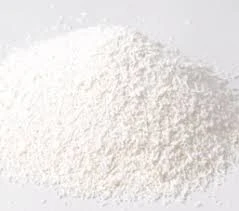
food additives in bread
The Role of Food Additives in Bread Production
Bread, a staple food in many cultures, has evolved significantly over the years. While traditional bread-making relied heavily on basic ingredients like flour, water, yeast, and salt, the modern bread industry incorporates a variety of food additives. These additives play crucial roles in enhancing the quality, shelf life, and overall characteristics of bread. In this article, we will explore the different types of food additives commonly used in bread, their functions, and some concerns regarding their use.
Types of Food Additives in Bread
1. Preservatives One of the primary reasons for using food additives in bread is to prolong its shelf life. Preservatives such as calcium propionate help prevent mold growth and spoilage, allowing bread to remain fresh for an extended period. This is particularly important in commercial bakery settings where products need to withstand transportation and storage.
2. Emulsifiers Emulsifiers are substances that facilitate the mixing of water and fats, resulting in a more uniform product. Common emulsifiers used in bread-making include mono- and diglycerides, which enhance dough stability and improve texture. These additives help create a softer crumb structure and contribute to better volume and rise during baking.
3. Dough Conditioners These additives improve the handling properties of the dough and can significantly affect the final product's quality. Ingredients like ascorbic acid and vital wheat gluten are often added to strengthen the dough, making it easier to work with and improving its elasticity. This is particularly important for bread types that require extensive kneading or fermentation.
4. Sweeteners While sugar is a traditional ingredient in many bread recipes, additional sweeteners such as high fructose corn syrup or honey may also be used. Sweeteners not only enhance flavor but also contribute to browning and crust formation through the Maillard reaction during baking. They can also improve moisture retention, leading to a softer end product.
food additives in bread

5. Coloring Agents To achieve a desirable appearance, some bread products are treated with coloring agents such as caramel color or annatto. These additives can enhance the visual appeal of bread, making it look more appealing to consumers. Additionally, coloring agents can mask imperfections in the crust or crumb.
Health Concerns and Consumer Awareness
Despite their benefits, the use of food additives in bread has raised health concerns among consumers. Some individuals are increasingly wary of consuming synthetic additives, fearing potential negative health effects. For instance, there is ongoing debate about the safety of certain emulsifiers and preservatives, with studies suggesting a link between high consumption of processed foods and various health issues.
Moreover, the label “additive-free” has gained popularity, pushing manufacturers to develop cleaner labels and use more natural alternatives. This trend has prompted bakers to experiment with organic ingredients and traditional bread-making methods that eschew certain additives in favor of simplicity and transparency.
The Future of Food Additives in Bread
As consumers demand more transparency in food production, the bread industry is adapting. Innovations in food science are paving the way for natural alternatives to traditional additives. Ingredients such as vinegar, natural enzymes, and even probiotic cultures are gaining traction as healthier options. These alternatives not only address consumer concerns but also offer potential benefits such as improved digestibility and enhanced flavors.
In conclusion, food additives play a fundamental role in modern bread production, improving quality, texture, and shelf life. While they offer several advantages, ongoing consumer scrutiny and demand for clean labels are shaping the future of bread-making. As the industry continues to evolve, it is likely that we will see a greater emphasis on natural ingredients and a reduction in synthetic additives, aligning with the growing emphasis on health-conscious and sustainable food choices. Ultimately, understanding the role of food additives can help consumers make informed decisions about the bread they choose to incorporate into their diets.
-
Buy High-Quality Trichloroisocyanuric Acid for Sale | TCCA 90% SupplierNewsAug.30,2025
-
Pure Sodium Dichloroisocyanurate Dihydrate | Powerful DisinfectantNewsAug.29,2025
-
Industrial Chemicals: Quality & Purity for Every IndustryNewsAug.28,2025
-
Nitrile Rubber Honoring Strict Production StandardsNewsAug.22,2025
-
Aspartame Ingredients Honoring Food Safety ValuesNewsAug.22,2025
-
Fertilizer for Balanced Plant NutritionNewsAug.22,2025
-
Cyanide Gold Processing with High Purity AdditivesNewsAug.22,2025
Hebei Tenger Chemical Technology Co., Ltd. focuses on the chemical industry and is committed to the export service of chemical raw materials.
-

view more DiethanolisopropanolamineIn the ever-growing field of chemical solutions, diethanolisopropanolamine (DEIPA) stands out as a versatile and important compound. Due to its unique chemical structure and properties, DEIPA is of interest to various industries including construction, personal care, and agriculture. -

view more TriisopropanolamineTriisopropanolamine (TIPA) alkanol amine substance, is a kind of alcohol amine compound with amino and alcohol hydroxyl, and because of its molecules contains both amino and hydroxyl. -

view more Tetramethyl Thiuram DisulfideTetramethyl thiuram disulfide, also known as TMTD, is a white to light-yellow powder with a distinct sulfur-like odor. It is soluble in organic solvents such as benzene, acetone, and ethyl acetate, making it highly versatile for use in different formulations. TMTD is known for its excellent vulcanization acceleration properties, which makes it a key ingredient in the production of rubber products. Additionally, it acts as an effective fungicide and bactericide, making it valuable in agricultural applications. Its high purity and stability ensure consistent performance, making it a preferred choice for manufacturers across various industries.





